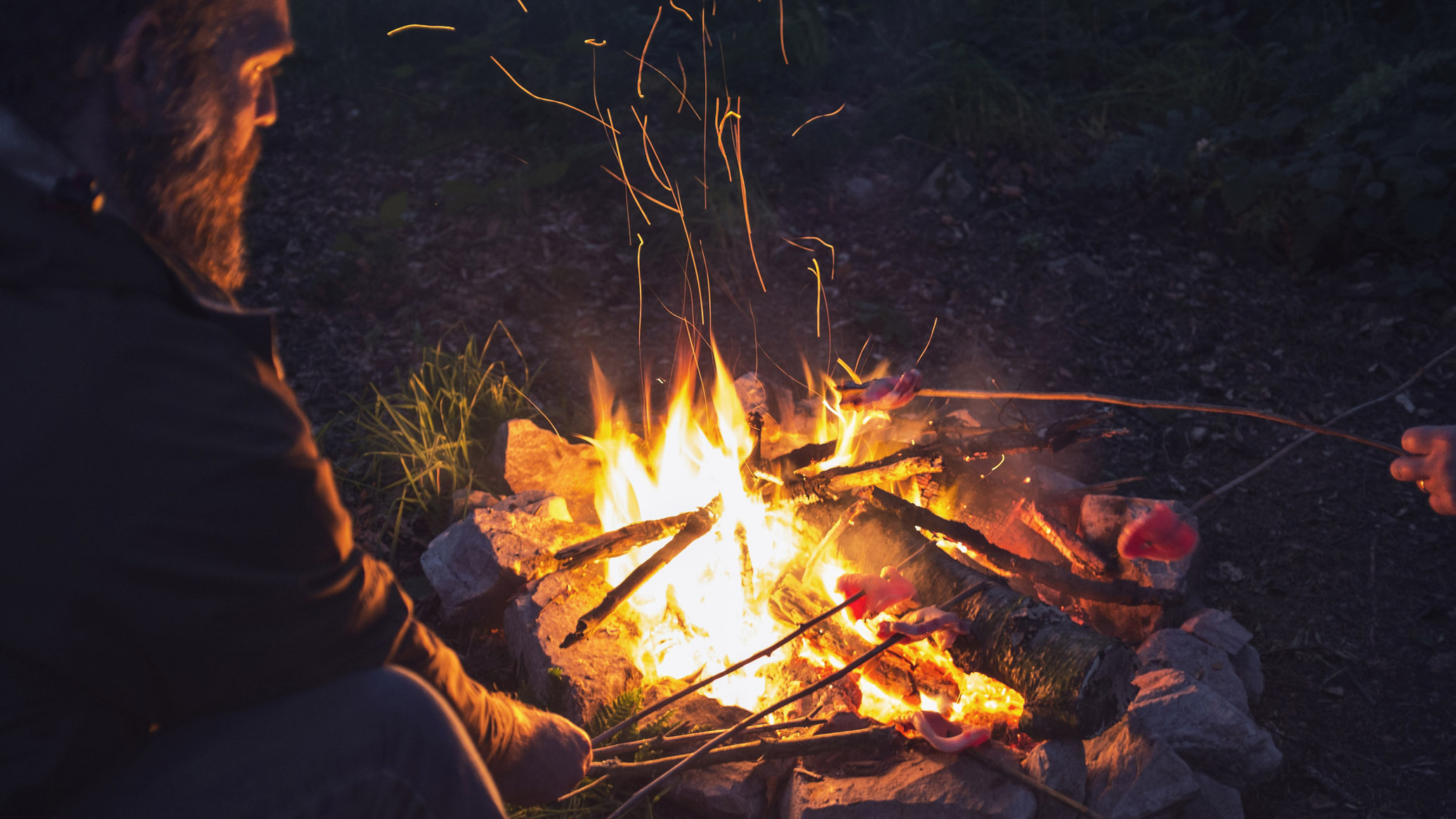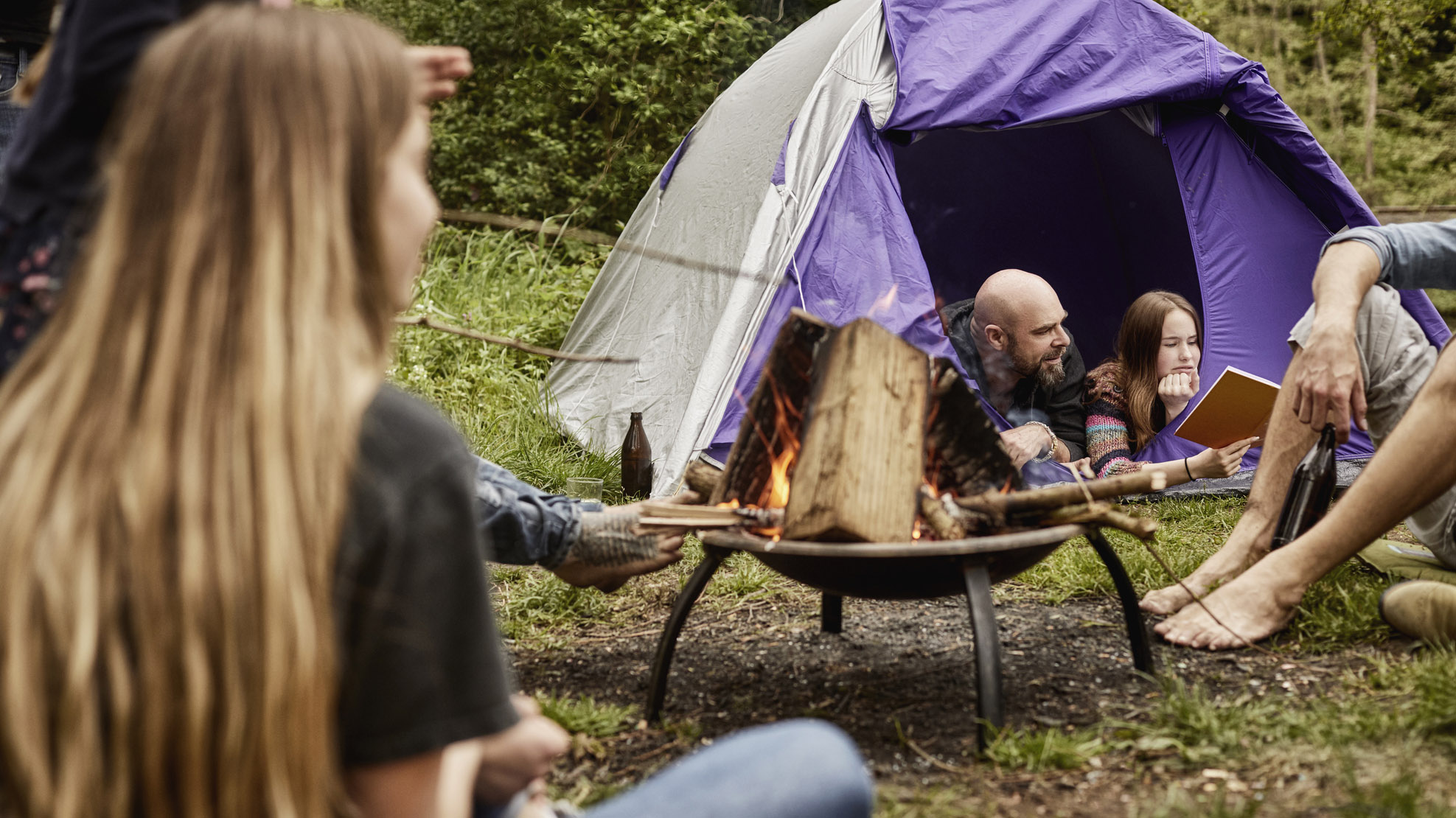How to store firewood: make your campfire fuel dry and keep it that way
Knowing how to store firewood correctly can make all the difference when it comes to igniting and sustaining that all-important campfire

Knowing how to store firewood is important if you are to enjoy and use a campfire at home, or cook using a wood-burning stove. A campfire is, after all, one of the quintessential experiences of any camping trip. Humans have been making campfires and cooking, singing and telling tall tales around them since we first discovered how to ignite a spark. This discovery is said to have had a profound effect on our evolution to becoming the dominant species on Earth today.
So, when your tribe are gathered around, stories primed for telling, marshmallows ready on sticks, guitar tuned for the singsong – nothing is going to burst the balloon of excitement like damp wood that won’t ignite. You see, fuel for the campfire is a precious commodity and knowing how to store firewood – and where to get it in the first place – are essential bits of knowledge.

Yes, you can use your best camping stove to cook your meals and, yes, you can still gather around and tell stories with the light of your headlamps, but it’s just not the same as a campfire. There’s something that grounds us beautifully when staring into the crackling flames, warmed by the radiated heat.
So, here we give you our guide on how to store firewood correctly, both generally and for the fire pits and wood-burning stoves once you've arrived at the campsite. We also guide you on where to obtain your firewood and, for those who want to adventure in the Scottish Highlands, how to use firewood in a mountain bothy.
How to store firewood correctly
The simple fact is that firewood needs to be dry to burn well. The golden number here is a moisture level of below 20%. So, the first consideration is getting and keeping the wood dry. Newly cut wood is known as green wood and is high in water content. In order for green wood to become fully-fledged firewood, it has to age for several months, a process known as seasoning or curing.

However, there’s more to knowing how to store firewood than just getting it and keeping it dry; it also needs to be stored in a way that keeps it safe from bug infestations and issues with fungus and mould. And no, spraying it with the best insect repellent is not a good idea.
The ideal place to store firewood is outside. This is to give the logs the best chance of drying completely. Unless the logs are already dry, storing them in a garage or outhouse will not allow the moisture level to get down to the golden 20%.
All the latest inspiration, tips and guides to help you plan your next Advnture!
Your woodpile should be kept off the ground to allow ventilation – a pallet is absolutely perfect for this task – and the outside of the wood should be exposed to the air. There’s no issue with leaving firewood uncovered if the forecast is dry. However, if any kind of precipitation is forecast, the woodpile is best placed under some form of cover. The pile should be stacked in rows of four feet high at most; a haphazard pile won’t give you the desired ventilation, ordered stacks are the key here.
Where to get your firewood for a camping trip

It’s important not to introduce wood that isn’t sourced locally. This is because foreign wood can introduce invasive insects and diseases, which in the worst case scenario can wipe out an entire forest ecosystem just as brutally as a wildfire. Don't take your own firewood to a campsite far from home.
Many campsites have their own stores of firewood and bundles can often be bought at a reasonable price. It may be that the site itself doesn’t have its own firewood store but staff will probably know of a local outlet where you can buy some, such as a gas station or grocery store.

If you are wild camping, campfires are frowned upon. The principles of leave no trace when camping can’t be followed if you create a new fire pit somewhere out in the wilderness. A portable camping stove is the much-preferred option for cooking, while you can always bring a hot water bottle along to keep you toasty when the sun sets.
As well as the remains of a backcountry campfire being unsightly for future visitors, there’s also the danger posed by wildfires to consider. While many wildfire are naturally occurring, most ignited by lightning strikes, open fires are also one of the main causes of what can be a devastating occurrence.
How to store firewood on a camping trip
So, you’ve bought your locally sourced firewood bundle and you’ve carried it over to where you’ve pitched the family tent. There’s just one problem, there’s a downpour forecast for the afternoon. Fortunately, it’s clear again for the evening, so the campfire singalong is not in jeopardy, but you'd best get the firewood under some form of shelter in the meantime.

As your firewood should already be dry enough to burn effectively, getting it out of the rain is your main priority, so store it somewhere dry. This could be in the trunk of your car, in a spare tent or under a well-erected tarp. When showtime arrives, fetch your firewood, gather your kindling and get that fire started.
Using firewood in one of the UK’s bothies
Bothies are buildings in the UK, mostly found in the Scottish Highlands, that are free for hikers and campers to take refuge in. All are permanently unoccupied and most are managed by the Mountain Bothies Association.

When staying in a bothy, there are no rules to follow as such, but there is a bothy code. Whether or not there will already be a store of firewood when you arrive at a bothy is a lottery but one way you can make sure there is by bringing your own. The bothy codes states that you should ‘burn only timber that is clearly firewood and never cut live trees’. It should go without saying, but don’t be tempted to plunder adjacent buildings by hacking at their wooden fences.
Finally, when you leave a bothy, make sure the fire is out. Bothies have been lost because of unattended fires.
Alex is a freelance adventure writer and mountain leader with an insatiable passion for the mountains. A Cumbrian born and bred, his native English Lake District has a special place in his heart, though he is at least equally happy in North Wales, the Scottish Highlands or the European Alps. Through his hiking, mountaineering, climbing and trail running adventures, Alex aims to inspire others to get outdoors. He's the former President of the London Mountaineering Club, is training to become a winter mountain leader, looking to finally finish bagging all the Wainwright fells of the Lake District and is always keen to head to the 4,000-meter peaks of the Alps. www.alexfoxfield.com

